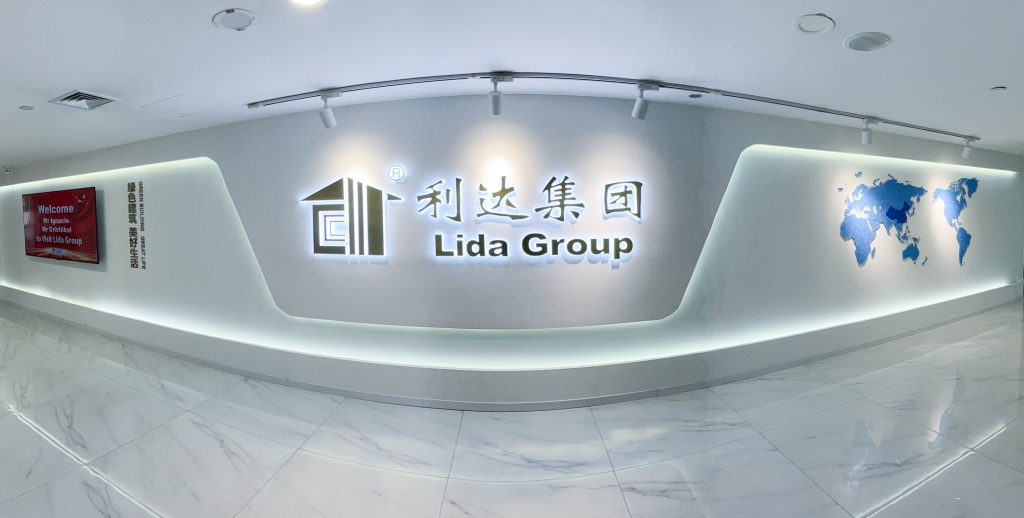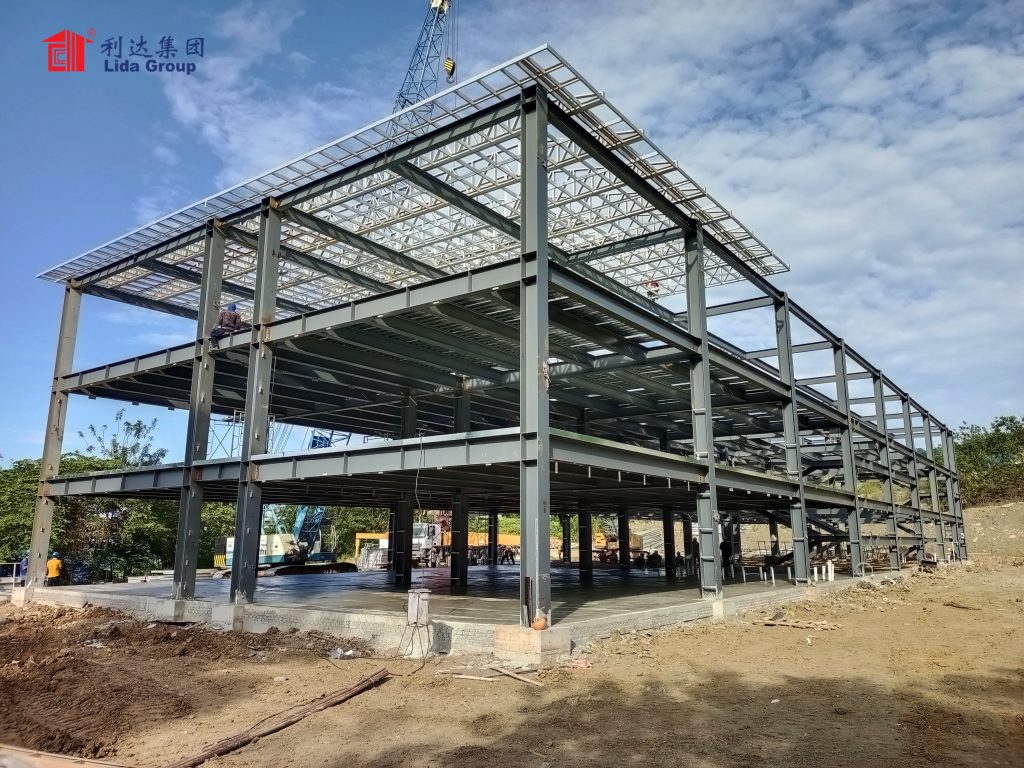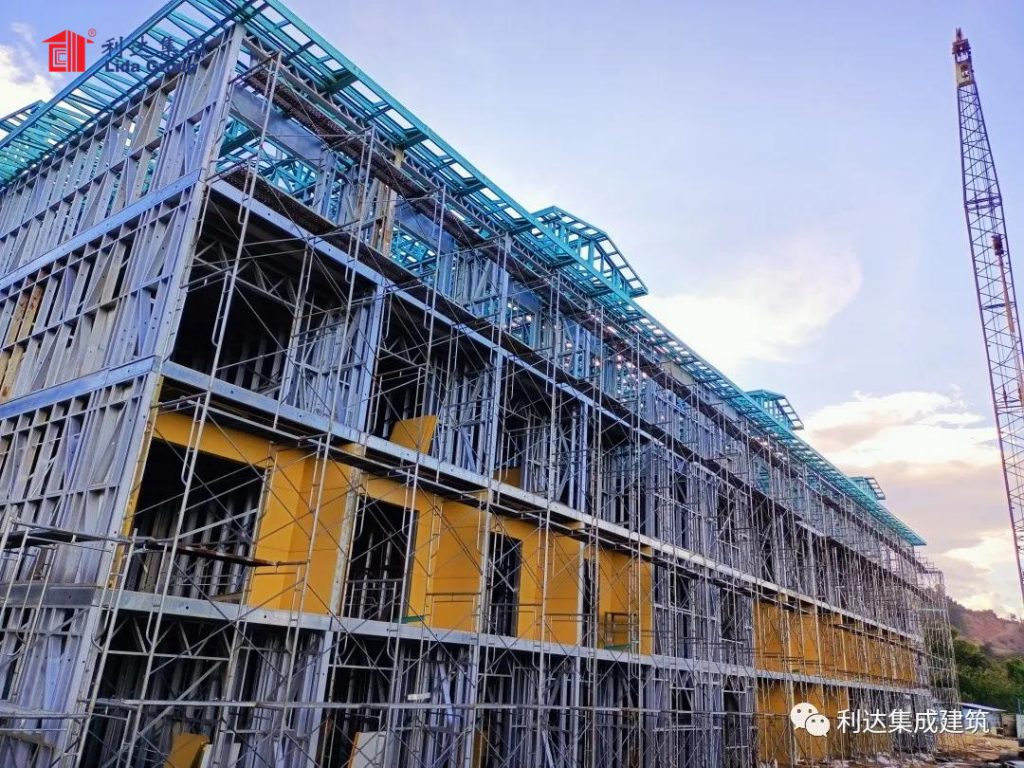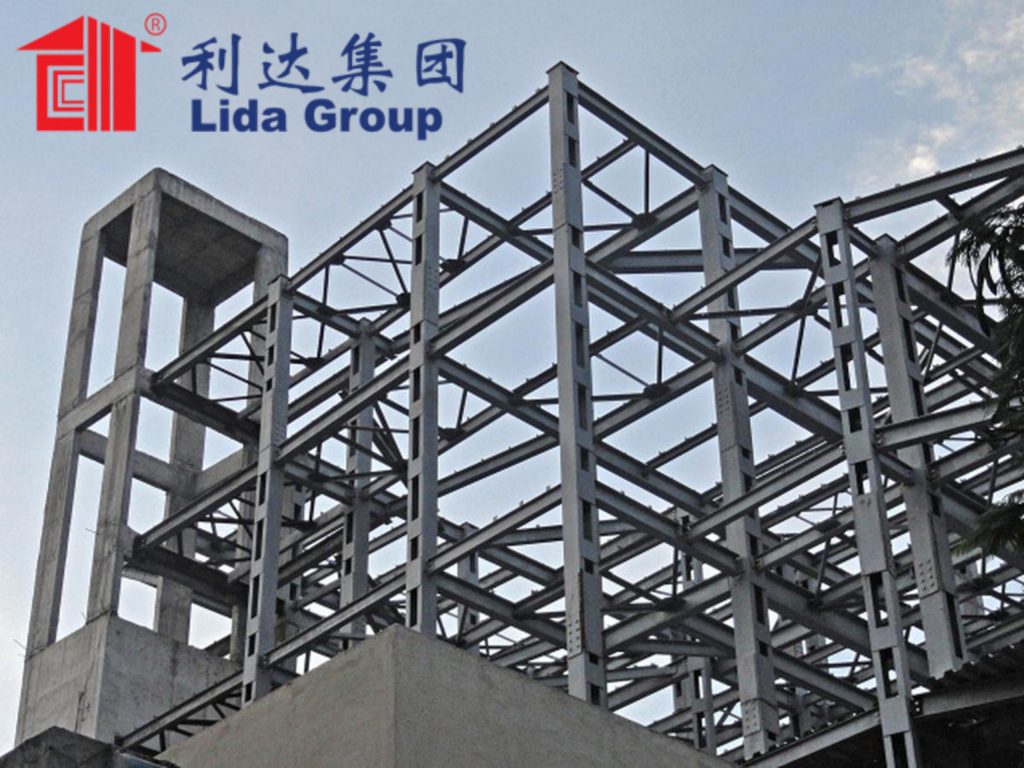The Growing Demand for Reliable Agricultural Infrastructure
In the modern agricultural landscape, there is an increasing demand for reliable infrastructure solutions that can withstand harsh environmental conditions while ensuring optimal functionality. Traditional farmhouses and warehouses, often constructed with wood or other perishable materials, are increasingly proving inadequate in providing the necessary durability and protection required by today’s farmers. These structures not only need to be robust enough to handle severe weather conditions but also must offer a safe and efficient environment for storing crops, livestock, and farming equipment.
The inadequacies of conventional building materials have become more apparent as climate change brings about more frequent and intense weather events. Wooden structures, susceptible to rot, pests, and fire, pose significant risks to the livelihoods of farmers who rely on these buildings for storage and shelter. Additionally, traditional methods of construction can be time-consuming and costly, further exacerbating the challenges faced by the agricultural sector.
Recognizing these issues, the agricultural industry has begun to seek out alternative solutions that offer enhanced durability and efficiency. Steel structural buildings have emerged as a promising option due to their inherent strength, longevity, and adaptability. These structures provide a superior level of protection against natural elements, thereby safeguarding valuable assets and reducing maintenance costs over time. Furthermore, steel buildings can be designed and constructed more quickly than traditional structures, allowing farmers to focus on their core operations without unnecessary delays.
As the agricultural sector continues to evolve, the need for reliable and durable infrastructure becomes even more critical. Modern farmers require solutions that not only meet current needs but also anticipate future challenges. Steel structural buildings represent a forward-thinking approach to addressing these demands, offering a resilient foundation upon which sustainable agricultural practices can thrive. This shift towards advanced building materials underscores the importance of innovation in supporting the growth and sustainability of the agricultural industry.
Introduction to Lida Group and Its Role in Modern Agriculture
Lida Group stands at the forefront of innovative agricultural infrastructure solutions, leveraging its extensive expertise in steel structural buildings to revolutionize the way modern farms operate. Established with a vision to enhance agricultural productivity through robust and adaptable construction technologies, Lida Group has consistently delivered high-quality products tailored to the unique needs of the agricultural sector. Their offerings encompass a wide range of applications, from durable metal farmhouses designed to withstand extreme conditions to expansive steel warehouses capable of housing vast quantities of crops and equipment.
One of the key strengths of Lida Group lies in its ability to customize solutions based on specific client requirements. Whether it’s designing a farmhouse that integrates seamlessly with existing operations or constructing a warehouse that maximizes storage capacity while minimizing costs, Lida Group’s solutions are characterized by their versatility and efficiency. By employing cutting-edge engineering techniques and utilizing premium-grade materials, they ensure that every project meets the highest standards of quality and reliability.
Moreover, Lida Group places a strong emphasis on sustainability, recognizing the pivotal role that environmentally responsible practices play in modern agriculture. Their steel structures are designed to be energy-efficient, reducing operational costs and minimizing the environmental footprint. This commitment to eco-friendly solutions aligns perfectly with the growing trend toward sustainable farming, making Lida Group a trusted partner for farmers looking to implement greener practices without compromising on performance.
Through continuous research and development, Lida Group stays ahead of emerging trends and technological advancements, ensuring that their products remain relevant and competitive. By investing in state-of-the-art manufacturing processes and fostering collaborations with leading experts in the field, they maintain a leadership position in delivering innovative agricultural infrastructure. As a result, Lida Group not only supports the immediate needs of farmers but also contributes to the long-term resilience and success of the agricultural industry as a whole.
Detailed Overview of Steel Structural Buildings and Their Advantages
Steel structural buildings offer a multitude of advantages that make them particularly well-suited for modern agricultural applications. One of the most compelling benefits is their exceptional durability. Constructed from high-strength steel, these buildings are resistant to many of the common threats faced by traditional wooden structures. They can withstand severe weather conditions such as heavy snow loads, high winds, and torrential rains without suffering damage. This resistance extends to issues like rot, mold, and insect infestations, which frequently plague wooden constructions. Consequently, steel structures require minimal maintenance over their lifespan, significantly reducing ongoing costs for farmers.
Another notable advantage of steel buildings is their flexibility in design and construction. Unlike rigid wooden frameworks, steel allows for greater architectural freedom, enabling the creation of large open spaces ideal for housing machinery, livestock, or bulk storage. Customizable features such as sliding doors, skylights, and ventilation systems can be easily integrated into the design, enhancing functionality and comfort. Moreover, steel buildings can be erected quickly using prefabricated components, drastically shortening construction timelines compared to traditional building methods. This speed and efficiency mean that farmers can get their facilities up and running sooner, minimizing disruptions to their operations.
From a cost perspective, steel structural buildings present a highly economical choice. While initial construction costs may be comparable to those of wooden buildings, the long-term savings are substantial. The reduced need for repairs and replacements translates into lower maintenance expenses over time. Additionally, steel’s thermal properties contribute to improved energy efficiency, resulting in lower heating and cooling bills. This financial benefit is especially significant for agricultural enterprises where controlling operational costs is crucial for profitability.
Safety is another critical factor where steel buildings excel. Steel is inherently non-combustible, offering superior fire resistance compared to wood. This feature is invaluable in preventing catastrophic losses from fires, which are unfortunately common in agricultural settings due to the presence of flammable materials like hay and grain. Furthermore, steel structures can be engineered to meet stringent seismic and wind load requirements, providing peace of mind during natural disasters.
Finally, the environmental impact of steel buildings should not be overlooked. Many steel products used in construction contain a high percentage of recycled material, contributing to resource conservation. Additionally, the longevity and recyclability of steel mean that these buildings have a smaller overall ecological footprint. For farmers committed to sustainable practices, choosing steel structural buildings aligns with broader goals of reducing environmental impact and promoting responsible land stewardship.
In summary, the combination of unparalleled durability, design flexibility, cost-effectiveness, safety, and environmental friendliness makes steel structural buildings an excellent choice for modern agricultural needs. These attributes collectively underscore why steel is becoming the preferred material for building durable metal farmhouses and efficient warehouses, ultimately enhancing the resilience and efficiency of agricultural operations.
Innovations in Metal Farmhouse Construction
Innovations in metal farmhouse construction have significantly elevated the standard of living and working conditions for modern farmers. One of the key advancements is the integration of advanced insulation technology, which ensures optimal temperature control within the structure. This is crucial for maintaining comfortable living environments and protecting sensitive agricultural products from extreme temperatures. High-performance insulation materials reduce energy consumption, thereby lowering utility costs and contributing to environmental sustainability.
Additionally, modern metal farmhouses incorporate smart ventilation systems designed to improve air quality and regulate humidity levels. These systems utilize sensors and automated controls to maintain ideal indoor conditions, creating healthier and more productive workspaces. Enhanced ventilation not only promotes better respiratory health for inhabitants but also helps prevent the buildup of harmful molds and mildews, preserving the integrity of stored goods.
Lighting innovations further enhance the functionality of these farmhouses. LED lighting systems are commonly used for their energy efficiency and longevity. These systems can be programmed to adjust brightness based on occupancy and daylight availability, optimizing both visibility and energy use. Smart lighting solutions also include motion-sensing capabilities, ensuring that lights are only active when needed, thus reducing unnecessary energy consumption.
Moreover, the aesthetic appeal of contemporary metal farmhouses has been greatly improved through architectural innovations. Sleek, modern designs combined with customizable exterior finishes allow farmers to create visually appealing structures that blend harmoniously with their surroundings. This not only enhances property value but also boosts morale among workers by providing a pleasant and professional atmosphere.
Lastly, the incorporation of modular construction techniques enables rapid assembly and disassembly of metal farmhouses. Prefabricated components can be transported and assembled on-site with minimal disruption, saving time and labor costs. This flexibility is particularly beneficial for farmers who need to expand or modify their facilities quickly in response to changing operational needs.
Overall, these innovations in metal farmhouse construction represent a significant leap forward in creating durable, efficient, and aesthetically pleasing structures that meet the diverse needs of modern agricultural enterprises.
Comprehensive Features and Benefits of Steel Warehouses
Steel warehouses stand out as essential components in the modern agricultural supply chain, offering a comprehensive array of features and benefits that enhance operational efficiency and asset protection. Firstly, the structural integrity of steel warehouses provides unparalleled durability, ensuring that these facilities can withstand harsh environmental conditions such as heavy rainfall, snowfall, and strong winds. This robustness minimizes the risk of structural failures and subsequent downtime, allowing agricultural businesses to maintain continuous operations without interruption.
One of the standout features of steel warehouses is their immense storage capacity. The open-span design characteristic of steel buildings allows for vast interior spaces free from obstructive columns or walls, maximizing usable floor area. This spaciousness is ideal for accommodating large quantities of crops, machinery, and other agricultural supplies. Efficient space utilization is further enhanced by customizable shelving and racking systems that can be tailored to specific storage needs, streamlining inventory management and improving accessibility.
Temperature control is another critical aspect where steel warehouses excel. Advanced insulation and climate control systems enable precise regulation of internal temperatures, crucial for preserving the quality of stored goods. Whether it’s grains, produce, or livestock feed, maintaining optimal storage conditions prevents spoilage and extends shelf life, directly impacting profitability. Additionally, some steel warehouses incorporate refrigeration units, facilitating the preservation of perishable items under controlled conditions.
Security is a paramount concern in any agricultural setting, and steel warehouses address this need effectively. The solid construction and reinforced entry points deter unauthorized access and minimize theft risks. Integrated security systems, including surveillance cameras, alarms, and secure access controls, further bolster the protective measures, ensuring that valuable assets remain safe and secure.
Moreover, the adaptability of steel warehouses is a significant advantage. Modular construction techniques allow for easy expansion or reconfiguration of the facility to accommodate changing business needs. Whether expanding storage capacity, adding processing areas, or integrating new technologies, the flexibility of steel structures provides a scalable solution that grows alongside the business.
Environmental considerations also play a crucial role in the design of modern steel warehouses. Sustainable practices, such as the use of recycled materials and energy-efficient systems, contribute to a reduced carbon footprint. Solar panels can be installed on rooftops to generate renewable energy, offsetting operational costs and promoting eco-friendly operations. Water management systems, including rainwater harvesting and drainage solutions, help conserve resources and mitigate runoff impacts.
In conclusion, steel warehouses offer a holistic solution that combines structural integrity, extensive storage capacity, advanced temperature control, robust security measures, and environmental sustainability. These features collectively enhance the efficiency, safety, and profitability of agricultural operations, positioning steel warehouses as indispensable assets in the modern agricultural landscape.
Case Studies: Successful Implementations of Steel Structures by Lida Group
To illustrate the effectiveness of Lida Group’s steel structural buildings in real-world scenarios, several case studies highlight successful implementations across various agricultural contexts. In one instance, a large-scale dairy farm sought to upgrade its aging wooden barns to more resilient and efficient facilities. Lida Group designed and constructed a series of steel farmhouses and warehouses that met the farm’s specific needs. The new structures provided ample space for housing cattle, storing feed, and managing daily operations. The farm reported significant improvements in animal welfare and productivity, thanks to better temperature control and reduced maintenance requirements. Additionally, the enhanced storage capacity allowed for smoother inventory management, ensuring a steady supply of feed throughout the year.
Another example comes from a vegetable grower who faced challenges with spoilage due to inadequate storage facilities. Partnering with Lida Group, they built a custom-designed steel warehouse equipped with advanced climate control systems. This enabled the grower to store harvested produce in optimal conditions, extending shelf life and reducing waste. The farmer noted a marked improvement in crop quality and marketability, leading to increased revenue and customer satisfaction. The warehouse’s flexible layout also facilitated easier handling and sorting of vegetables, streamlining the entire post-harvest process.
A third case involves a diversified farming operation that needed to expand its infrastructure to support new ventures in agritourism. Lida Group developed a multi-purpose steel building that served as both a functional agricultural hub and an attractive venue for visitors. The structure incorporated modern amenities such as visitor centers, educational displays, and event spaces, all housed within a durable and versatile framework. This innovative solution not only supported the farm’s operational needs but also attracted additional income streams through tourism activities.
These case studies underscore the versatility and efficacy of Lida Group’s steel structural buildings. Each implementation addressed unique challenges and requirements, demonstrating how customized steel solutions can drive tangible benefits for agricultural enterprises. From improved animal care and reduced product loss to expanded operational capabilities and diversified revenue sources, the positive outcomes achieved through these projects exemplify the transformative potential of steel structures in modern agriculture.
### Ensuring Longevity and Safety: The Cornerstone of Lida Group’s Success
At the heart of Lida Group’s success lies its unwavering commitment to ensuring the longevity and safety of its steel structural buildings. Every project undertaken by Lida Group undergoes rigorous quality assurance processes, beginning with the selection of premium-grade materials. High-strength steel, known for its exceptional durability and resistance to environmental factors, forms the backbone of each structure. Rigorous testing and inspection protocols are implemented at every stage of production to guarantee that the final product meets the highest industry standards.
Quality control does not end with material selection; it extends throughout the entire construction process. Lida Group employs advanced manufacturing techniques and precision engineering to ensure that each component fits seamlessly together, eliminating potential weak points that could compromise the building’s integrity. Skilled technicians oversee every step, from fabrication to assembly, adhering to strict guidelines that prioritize safety and performance.
Furthermore, Lida Group invests heavily in research and development to stay ahead of emerging trends and technological advancements. Continuous innovation ensures that their steel structures incorporate the latest safety features and sustainable practices. For instance, recent developments have focused on enhancing fire resistance, seismic stability, and energy efficiency, making these buildings safer and more environmentally friendly.
Compliance with international safety regulations and local building codes is another cornerstone of Lida Group’s approach. Each structure is meticulously designed to meet or exceed stringent safety standards, providing farmers with peace of mind knowing that their investments are protected. Regular inspections and maintenance recommendations are provided to ensure that the buildings continue to perform optimally over their lifespan.
In addition to physical safety, Lida Group prioritizes the well-being of the occupants. Ergonomic designs and thoughtful layouts promote a comfortable and healthy working environment, which is crucial for sustaining productivity in agricultural operations. Ventilation systems, insulation, and lighting are optimized to create a conducive atmosphere for both humans and animals.
By combining meticulous attention to detail with cutting-edge technology, Lida Group sets a new benchmark for safety and longevity in steel structural buildings. Their dedication to excellence ensures that farmers can trust in the enduring reliability and superior performance of these structures, reinforcing their commitment to supporting the growth and prosperity of modern agriculture.
Sustainability Practices in Steel Structural Building Technologies
Sustainability is at the core of Lida Group’s mission, driving the development of environmentally responsible steel structural building technologies. The company recognizes the pressing need to minimize environmental footprints while maximizing economic benefits for farmers. To achieve this, Lida Group incorporates numerous green initiatives into their building processes.
Firstly, the use of recycled steel plays a pivotal role in reducing raw material consumption and waste generation. A significant portion of the steel utilized in their structures is derived from recycled sources, thereby conserving natural resources and lowering the overall environmental impact. Additionally, the recycling process itself consumes less energy compared to producing virgin steel, contributing to reduced greenhouse gas emissions.
Energy efficiency is another critical aspect of Lida Group’s sustainable practices. Their steel buildings are designed with advanced insulation systems that optimize thermal performance, reducing the need for artificial heating and cooling. This leads to substantial energy savings, benefiting both the environment and the farmer’s bottom line. Solar panels can also be integrated into the roofs of these structures, harnessing renewable energy to power operations and further decrease reliance on fossil fuels.
Water conservation is equally important, especially in agricultural settings where water scarcity is a growing concern. Lida Group’s buildings often feature rainwater harvesting systems, capturing and storing precipitation for reuse in irrigation and other non-potable applications. This practice not only reduces freshwater usage but also mitigates runoff, helping to protect local ecosystems.
Waste reduction strategies are integral to Lida Group’s construction methodologies. Prefabrication techniques minimize on-site waste by ensuring precise measurements and efficient material usage. Any leftover materials are carefully managed and either repurposed or recycled, maintaining a closed-loop system that minimizes landfill contributions.
Moreover, Lida Group emphasizes the lifecycle assessment of their buildings, considering the entire lifespan from production to demolition. By focusing on durability and ease of disassembly, these structures can be reused or recycled at the end of their service life, promoting circular economy principles. This forward-thinking approach ensures that the environmental benefits extend far beyond initial construction.
In conclusion, Lida Group’s commitment to sustainability is evident in every facet of their steel structural building technologies. Through the strategic use of recycled materials, energy-efficient designs, water conservation measures, and waste reduction practices, they set a new standard for environmentally responsible construction. These efforts not only contribute to global sustainability goals but also empower farmers to adopt greener practices without sacrificing productivity or profitability.
Summary and Future Prospects
In summary, Lida Group’s steel structural buildings redefine the standards for metal farmhouses and warehouses by offering unmatched durability, flexibility, and efficiency. These structures not only provide robust protection against harsh environmental conditions but also ensure optimal functionality and safety for agricultural operations. The numerous advantages—ranging from superior weather resistance and cost-effective maintenance to enhanced storage capacity and environmental sustainability—make steel buildings an indispensable asset for modern farmers. By embracing these innovations, farmers can safeguard their investments, improve operational efficiencies, and pave the way for a more resilient and prosperous future.
Looking ahead, the continued evolution of steel structural buildings holds great promise. Advances in materials science and construction techniques will likely lead to even more robust and versatile structures, capable of meeting the ever-growing demands of the agricultural sector. Moreover, as sustainability remains a priority, we can expect to see further integration of eco-friendly features, such as renewable energy systems and water conservation measures, into these buildings. This ongoing progress ensures that steel structures will continue to play a vital role in supporting the growth and sustainability of modern agriculture, ultimately contributing to global food security and economic stability. Through continuous innovation and a steadfast commitment to quality and sustainability, Lida Group remains poised to lead the way in shaping the future of agricultural infrastructure.

Related news
-
Revolutionizing Storage and Shelter: Lida Group's Steel Structural Building Technologies Elevate Metal Farm Houses and Warehouses
2025-03-17 17:23:08
-
Reliable Solutions for Modern Agriculture: Lida Group Expands Steel Structural Building Offerings to Include Durable Farm Houses and Warehouses
2025-03-17 17:02:39
-
Innovative Housing Solutions by Lida Group: Low Cost Worker Dormitories that Combine Prefab Efficiency with Fire and Water Safety
2025-03-14 16:52:53
contact us
- Tel: +86-532-88966982
- Whatsapp: +86-13793209022
- E-mail: sales@lidajituan.com






